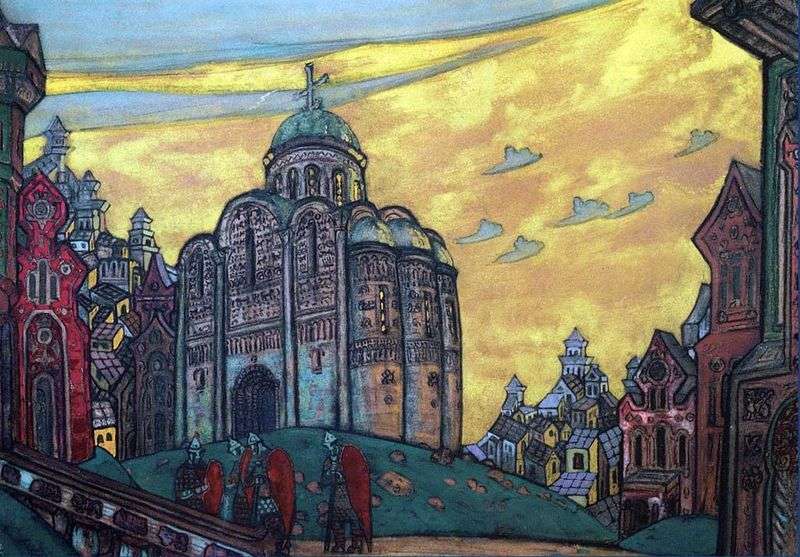
Libretto by A. P. Borodin, written on the material of the Russian epic poem of the XII century “The Word about Igor’s Regiment”. The implementation of Diaghilev’s plans for the widespread propaganda of Russian art abroad involved the best forces of Russian culture. Since 1908, the leading role in this activity has been given to the theater.
At the beginning of the twentieth century, Russian theatrical scenery painting was flourishing. The stage design has become an equal component of the productions. The artist became a significant person in the theater, his name on the posters occupied a prominent place. At the court of demanding French public Dyagilev made achievements of domestic art. “This is the paint! This is the scenery! I just returned from Russia, and they have it everywhere!” – spoke on one of the performances of the artist Maurice Denis.
Noisy, well-deserved success fell on the Roerich in 1909, when the first “Russian season” opened in the Paris theater “Chatelet”. In the design of Roerich went the “Polovtsian Dances” from Prince Igor of Borodin and Pskovite of Rimsky-Korsakov. In the years 1908-1909 sketches “Putivl”, “Galitsky yard”, “Terem Yaroslavna” were also written. But the full opera “Prince Igor” in the Roerich scenery was staged only in 1914 in London. By the magnificence of painting, these sketches belong to the most glorious among the master’s creations. The premiere took place on May 8, 1914. The triumph of “Prince Igor” was reported to Roerich in Petersburg.
The artist Allegri wrote: “Dear Nikolai Konstantinovich. Yesterday evening” Igor “walked with the full hall; success was great, the British roared with delight. done, we can safely say that this is an outstanding production. ” In the sketch of the scenery “Putyvl”, as in its first version of 1908, the magnificent white-stone cathedral occupies a central place in the composition.
The point of view found by Roerich from below and on the side made this image of ancient Russian architecture even more monumental. However, unlike the cathedral from the sketch of the same name in 1908, instead of the harsh modeling of smooth stone walls, the artist depicted here the lace of the pattern of the portal and apse sides of the monument.
In it features of Dmitrievsky Cathedral of Vladimir are guessed. As in the sketch of 1908, the temple stands on a green hill, precisely inlaid with boulder stones, but it is surrounded not by powerful fortress walls, but by the urban landscape of Putivl, whose solution resembles the architectural backgrounds of ancient Russian icons. In the foreground, the squad and Igor’s army will gather to march.
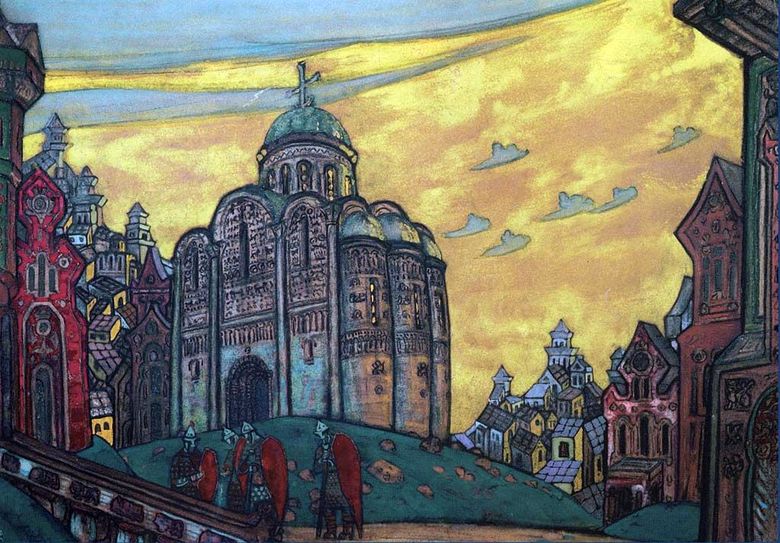 Putivl – Nicholas Roerich
Putivl – Nicholas Roerich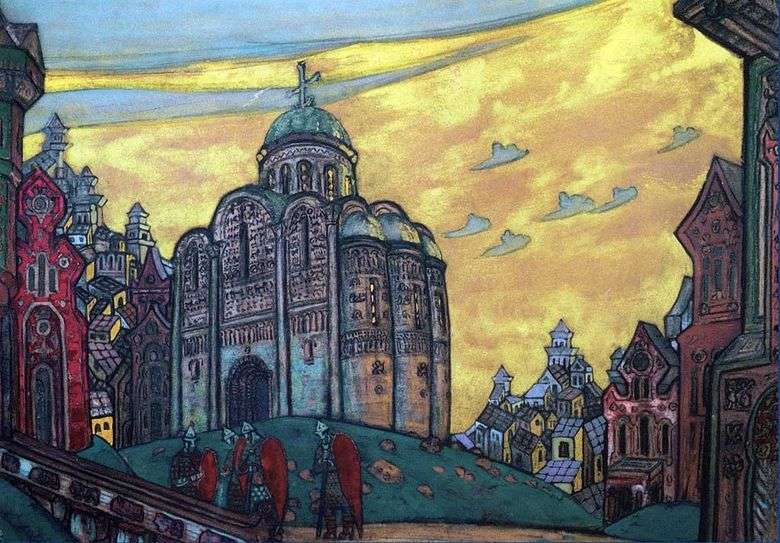 Putivl – Nicholas Roerich
Putivl – Nicholas Roerich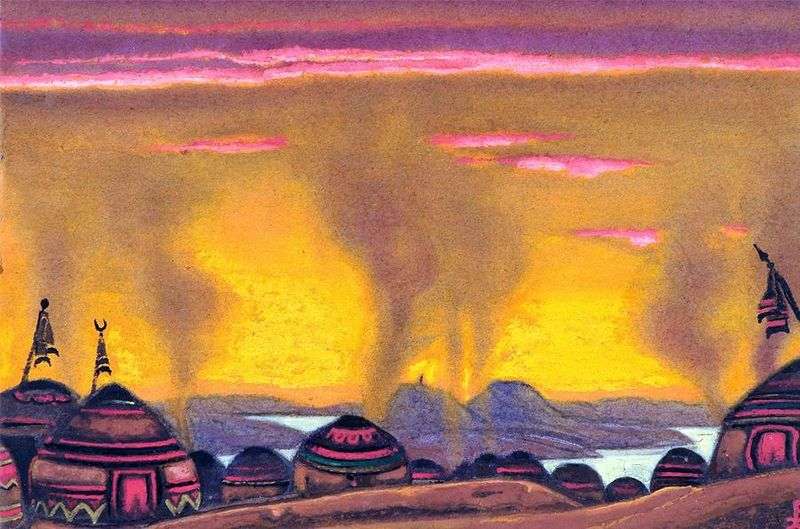 Polovtsy camp by Nicholas Roerich
Polovtsy camp by Nicholas Roerich Snow Maiden by Nicholas Roerich
Snow Maiden by Nicholas Roerich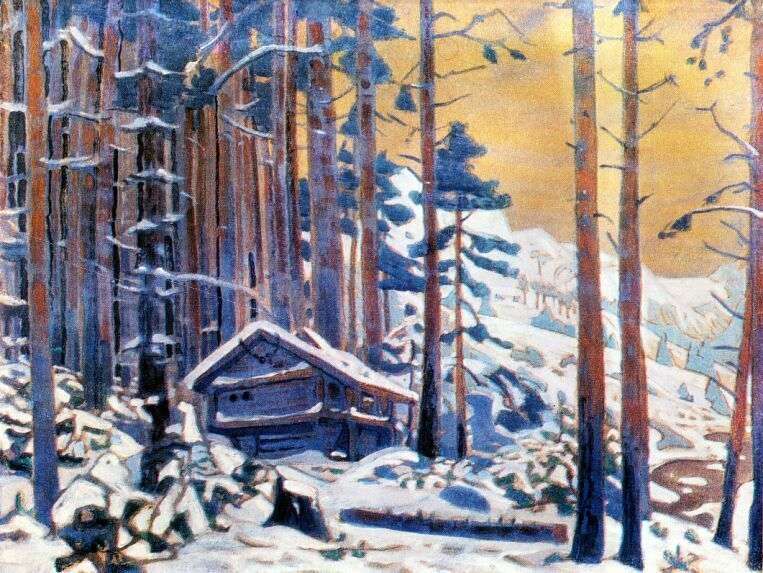 Peer Gynt by Nicholas Roerich
Peer Gynt by Nicholas Roerich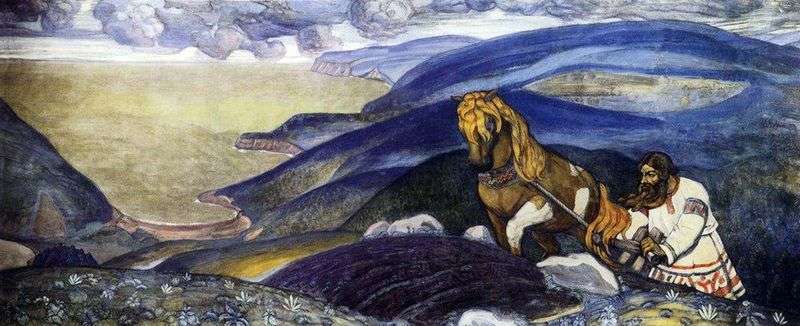 Mikula Selyaninovich by Nicholas Roerich
Mikula Selyaninovich by Nicholas Roerich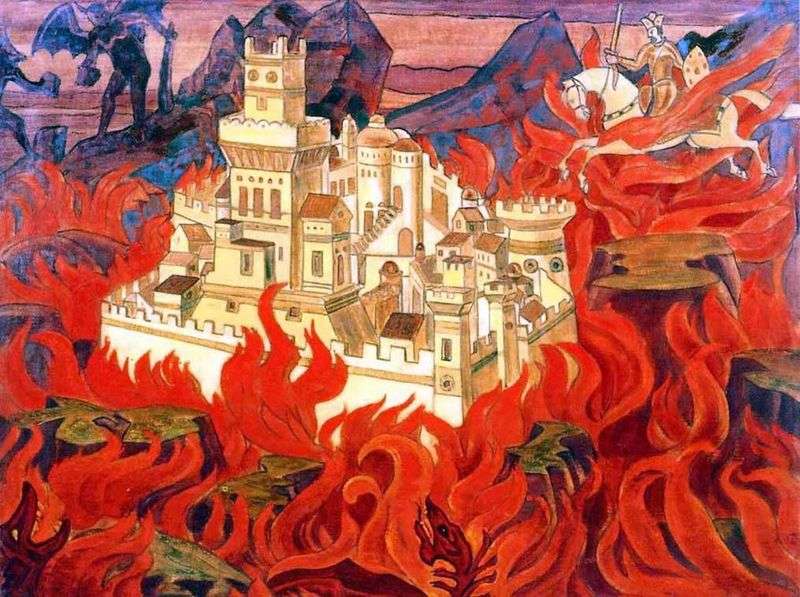 Purest Hail by Angers to Enemies – Nicholas Roerich
Purest Hail by Angers to Enemies – Nicholas Roerich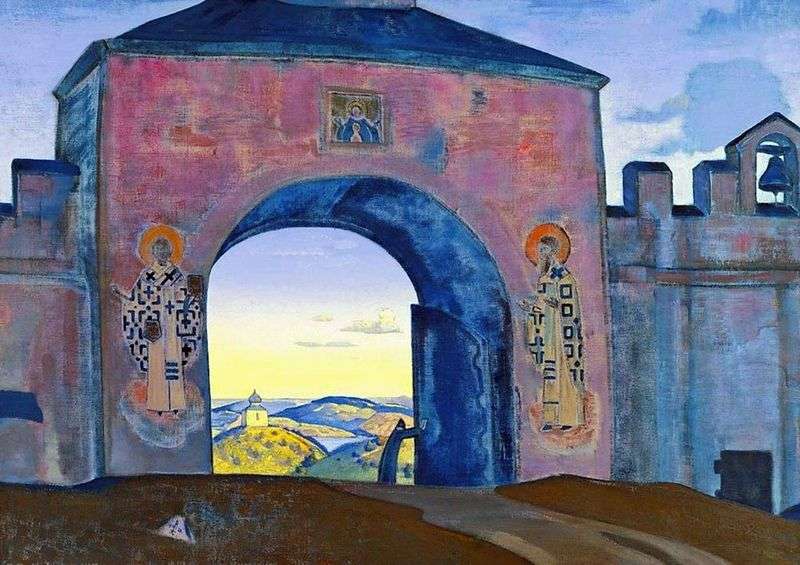 And open the gate by Nicholas Roerich
And open the gate by Nicholas Roerich